
Blog / Guides
How to promote a landing page with SEO? Top landing page optimization tips
This article is updated regularly
Last update:
25 August 2025
Employing SEO techniques in affiliate marketing has proven to be a consistently effective method for driving traffic over time. However, it's crucial to understand the nuances and stay informed about changes in the optimization process. Indeed, SEO practices today differ from those of the past, with many previously successful strategies no longer applicable. So, how can you effectively promote your landing page using SEO? In this article, we'll provide some practical tips to optimize your landing page for better results.
While some aspects of SEO covered here serve as additional knowledge, it's worth noting that our blog post dedicated to SEO tips and tricks offers a more thorough exploration of the basics. Our SEO checklist provides a comprehensive overview and serves as a valuable resource for enhancing your SEO efforts and maximizing your landing page's visibility.
Keywords in SEO: how to do it right?
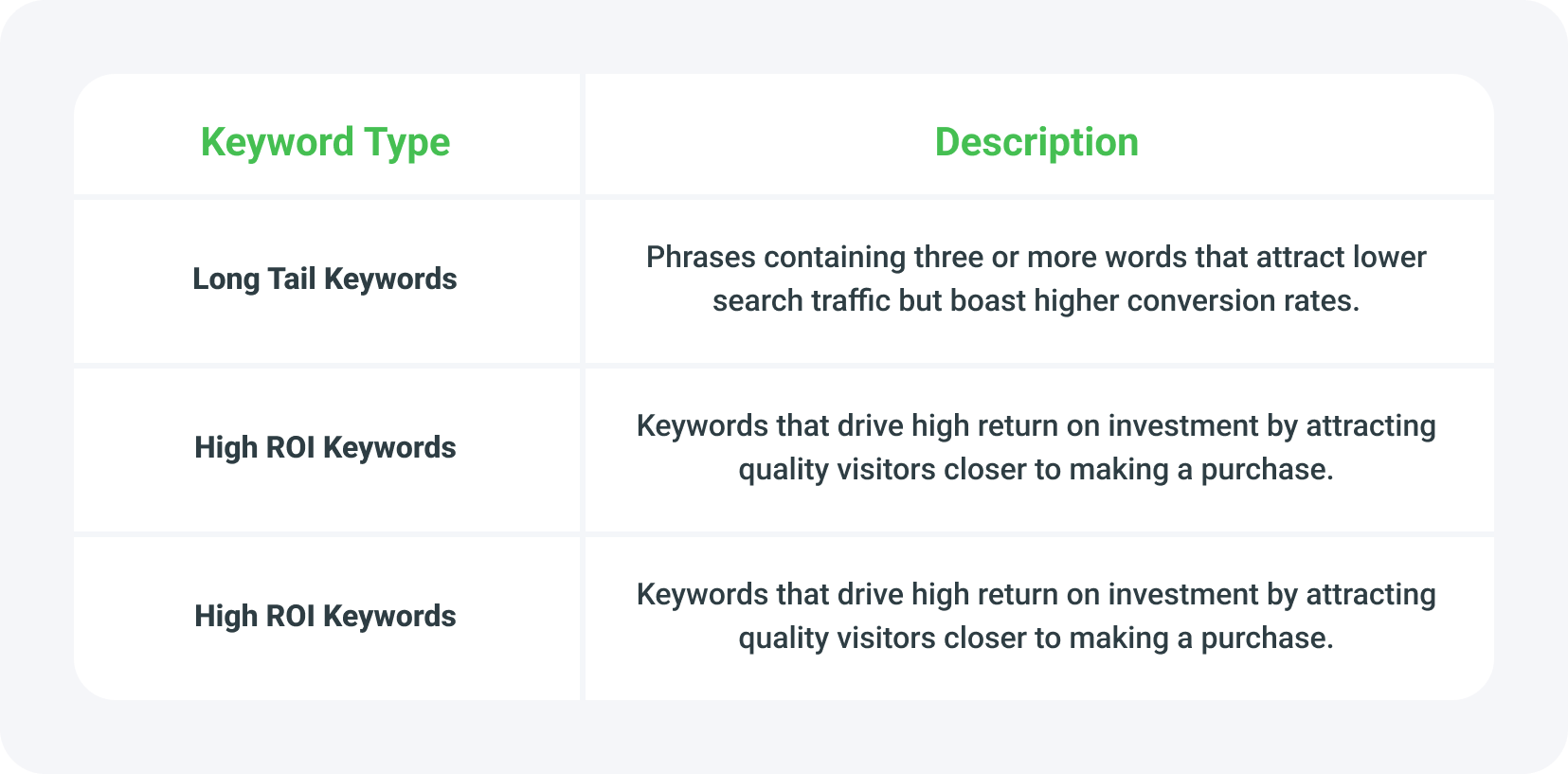
Effective keyword usage is, without a doubt, the main thing that cannot be overlooked and understanding its best practices can significantly impact your online presence. Let's delve into the strategies to ensure your content is optimized for success.
Understanding Long Tail Keywords
Long-tail keywords, also known as long keywords, are phrases containing three or more words. While they may attract lower search traffic compared to broader terms, they tend to have higher conversion rates than generic keywords. Interestingly, 92% of all keywords that people type into search engines are long tails.
For instance, imagine you're in the business of selling eco-friendly yoga mats. Attempting to rank prominently for the generic term "yoga mat" can be daunting due to fierce competition. However, focusing on a long-tail keyword like "natural rubber yoga mat for hot yoga" presents a strategic opportunity. This specific phrase not only faces less competition but also attracts users with a clear intention to purchase. By targeting such precise keywords, you can effectively reach potential customers who are actively seeking your product.
Finding the Right Keywords: A Strategic Approach

In keyword research, perfection is elusive. It often requires a delicate balance between various factors to identify the most suitable keywords for your goals. This entails striking a balance between high search volume and low keyword difficulty.
High search volume indicates significant monthly search traffic for specific keywords. Conversely, a low keyword difficulty score suggests minimal competition from high-authority websites, increasing your chances of achieving a higher ranking.
To optimize your keyword selection process, it's advisable to target keywords with a monthly search volume exceeding 300 while maintaining a keyword difficulty score below 40. This approach maximizes your potential for visibility and success in search engine rankings.
Selecting Keywords with High ROI
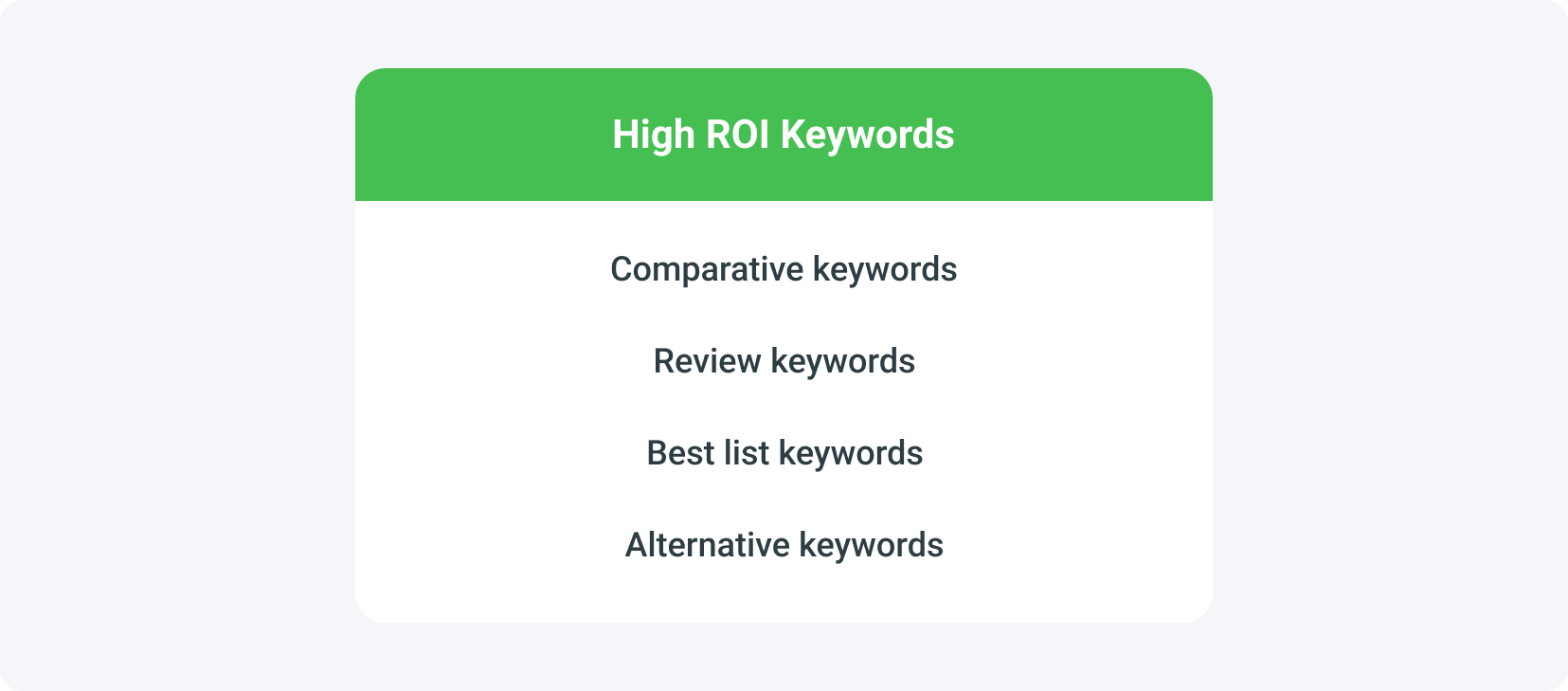
It's important to note that prioritizing high ROI keywords isn't directly tied to ranking factors affecting SERP visibility. Nevertheless, focusing on these keywords can attract quality visitors who are closer to making a purchase decision, thereby maximizing the return on investment (ROI) for your landing page.
Here are various examples of keyword types that can drive high ROI:
• Comparative keywords - phrases comparing two brands or products, such as "Nike vs Adidas shoes."
• Review keywords - terms indicating content aimed at helping users evaluate a product, like "iPhone 12 Pro review: features, pros, and cons."
• Best list keywords - keywords showcasing curated lists of top products or services within a specific niche, e.g., "Best productivity apps for remote workers."
• Alternative keywords - phrases suggesting alternatives to specific products or services, such as "alternative to Airbnb for vacation rentals."
Informational keywords are another type of keyphrases that should definitely be mentioned as they can also bring a broad audience to your landing page.
• Informational Keywords - queries addressing audience pain points and relevant to your offering, like "How to fix a leaky faucet: step-by-step guide."
Crafting compelling content around these diverse keywords can lead to significant growth for your landing page. By catering to users at various stages of the buying journey, you can enhance engagement and drive conversions effectively.
SEO Promotion: Navigating Link Strategies
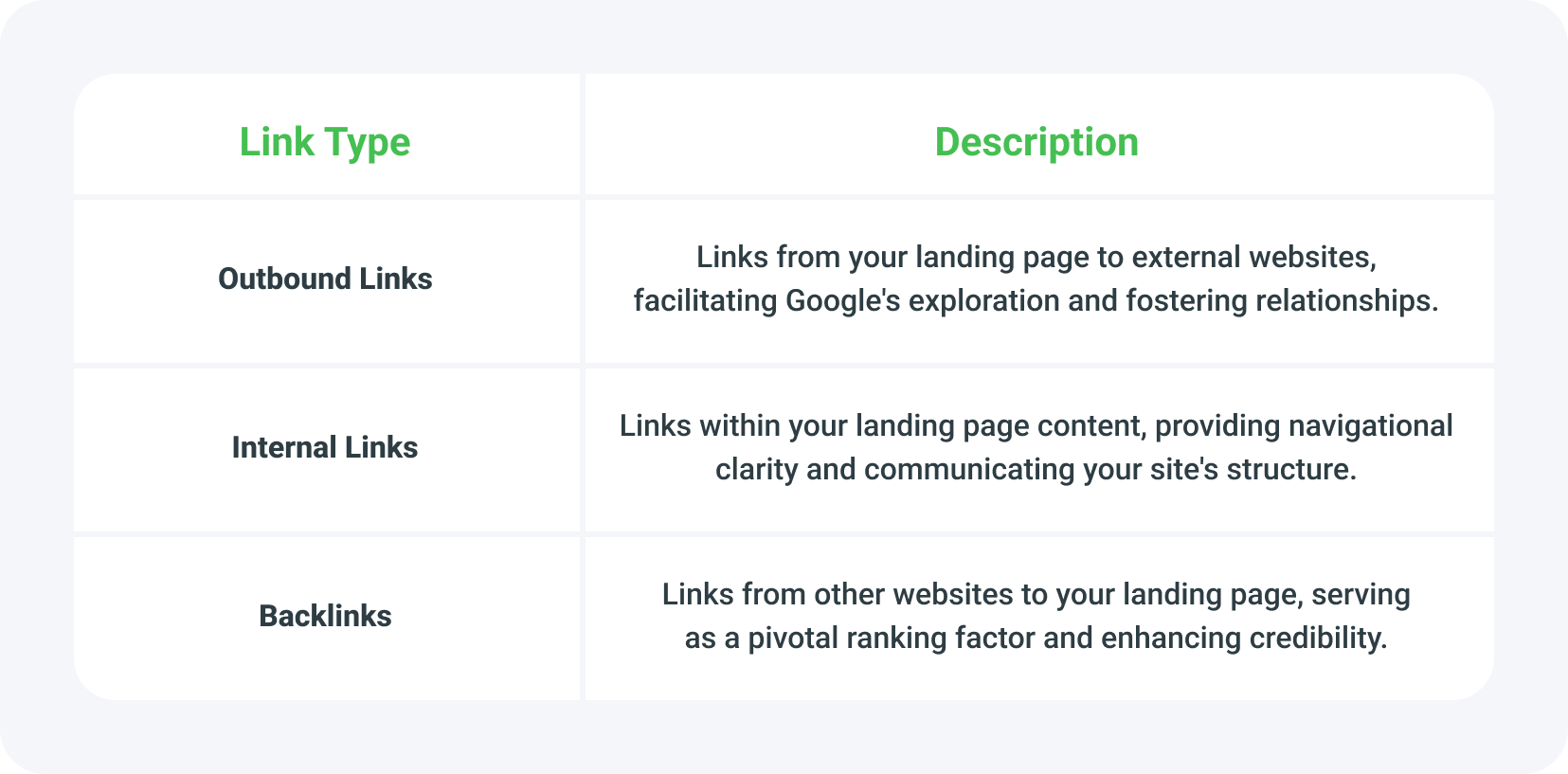
In SEO, links serve as the lifeblood of your strategy. Without them, your presence on the web is akin to standing idle in a dimly lit corner, invisible to potential visitors and devoid of clicks on your affiliate links. Put simply, to ascend in rankings, you need links. When delving into the world of links, it's essential to understand the three primary types: outgoing, internal, and reverse. Each type warrants careful consideration and execution to fortify your SEO efforts effectively.
Understanding Outbound Links
Outbound links serve as the connective threads of the internet, akin to a spider's web, facilitating Google's exploration of your site in relation to others. For instance, imagine your landing page features an article discussing the benefits of dietary supplements containing collagen. By including a link within your content to another blog covering the same topic, you enable Google to discover and index your page for future searches on similar subjects. Beyond aiding search engine visibility, outbound links also foster valuable relationships with fellow content creators. By referencing and linking to their work, you not only capture searcher attention but also nurture potential collaborations. When you provide a backlink to their content, there's a chance they'll reciprocate, thus fostering a mutually beneficial exchange within the online community.
Understanding Internal Links
Internal links act as the adhesive that binds your website together, ensuring cohesiveness and navigational clarity. By strategically placing links to other pages within your landing page content, you provide Google with insights into your site's architecture and hierarchy. These links effectively communicate which pages hold greater importance, such as your main pages, and help search engines understand the overall structure of your website.
Understanding Backlinks
The significance of backlinks cannot be overstated. They serve as a pivotal ranking factor for search engines like Google, indicating that other websites recognize and endorse your content by linking to it. However, acquiring backlinks is not within your direct control, unlike inbound and internal links. Yet, there are strategies to enhance your chances of earning them.
Here are some effective tactics:
• Create compelling content - craft content for your landing page that stands out and provides genuine value to your audience. Quality content naturally attracts backlinks from other websites seeking to reference or share valuable resources.
• Outreach - politely request backlinks from other website owners, but avoid spammy or overly persistent tactics. Offer a compelling reason for them to link to your landing page, such as providing valuable statistics or insights that complement their content.
• Broken link building - identify broken links on other websites, preferably using tools like Ahrefs to streamline the process. Reach out to the site owners, offering your content as a replacement for the broken link, thus providing a mutually beneficial solution.
• Guest blogging - collaborate with other bloggers or website owners by offering to contribute guest posts. This not only exposes your content to a new audience but also typically allows you to include a backlink to your own site within the author bio or content.
In conclusion, backlinks are invaluable assets for your landing page. While acquiring them may require significant time and effort, the benefits they bring in terms of improved search engine visibility and credibility make the endeavor worthwhile.
Improving Landing Page Loading Time: Strategies and Importance
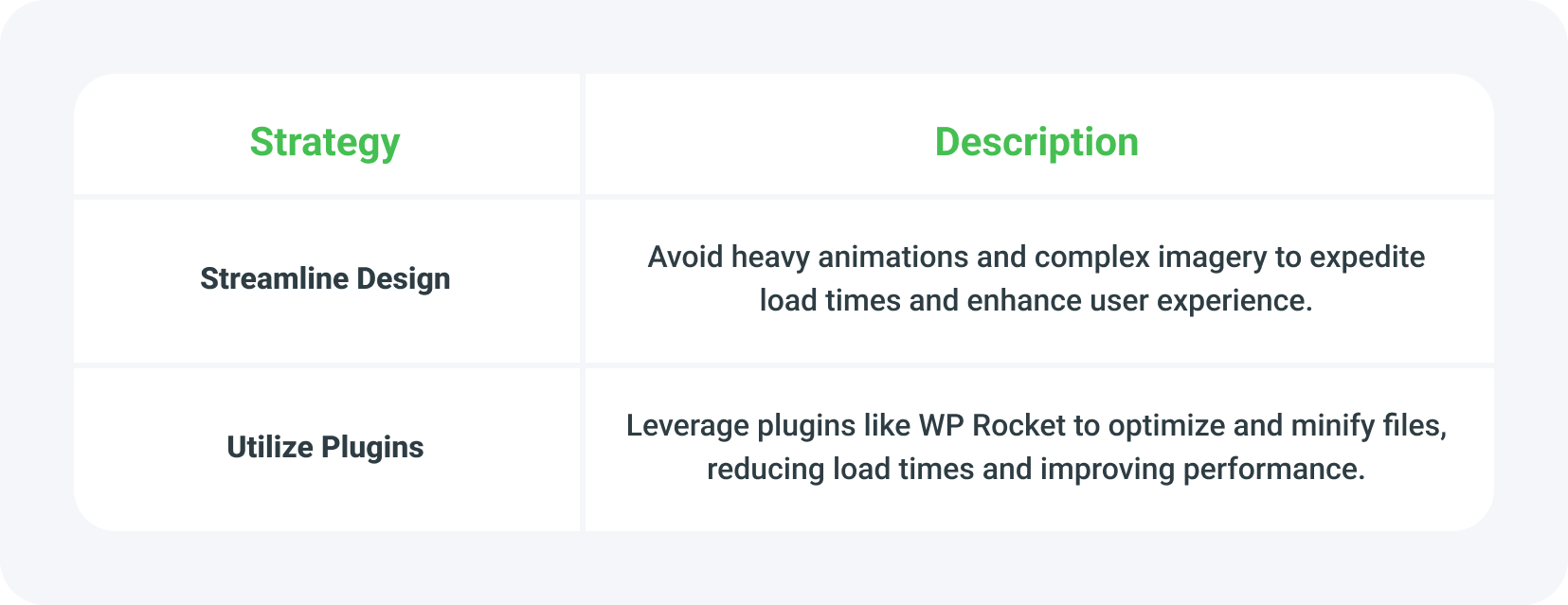
Nowadays, user patience is at an all-time low. With individuals multitasking across multiple tabs and devices, the need for swift page loading times has never been more crucial. A delay of just a few seconds can prompt users to abandon a page, resulting in adverse effects on both user experience and SEO performance.
To assess your landing page's loading time, utilize free tools such as tools.pingdom.com or webpagetest.org. Additionally, ensure your page is optimized for various devices by testing its responsiveness using services like browserstack.com or search.google.com/test/mobile-friendly.
Here are some key strategies to enhance loading speed:
• Streamline design - avoid heavy animations and complex imagery that can slow down page loading. Embrace minimalism, incorporating ample white space and simple visuals to expedite load times and enhance user experience.
• Utilize plugins - If your landing page is built on platforms like WordPress, leverage plugins such as WP Rocket to optimize and minify files, thereby reducing load times and improving overall performance.
Ultimately, prioritizing fast-loading landing pages is essential for retaining user engagement, reducing bounce rates, and enhancing SEO rankings. For further insights on crafting user-friendly landing pages and unlocking design secrets, explore relevant resources available on our website.
Securing Featured Snippets in Google
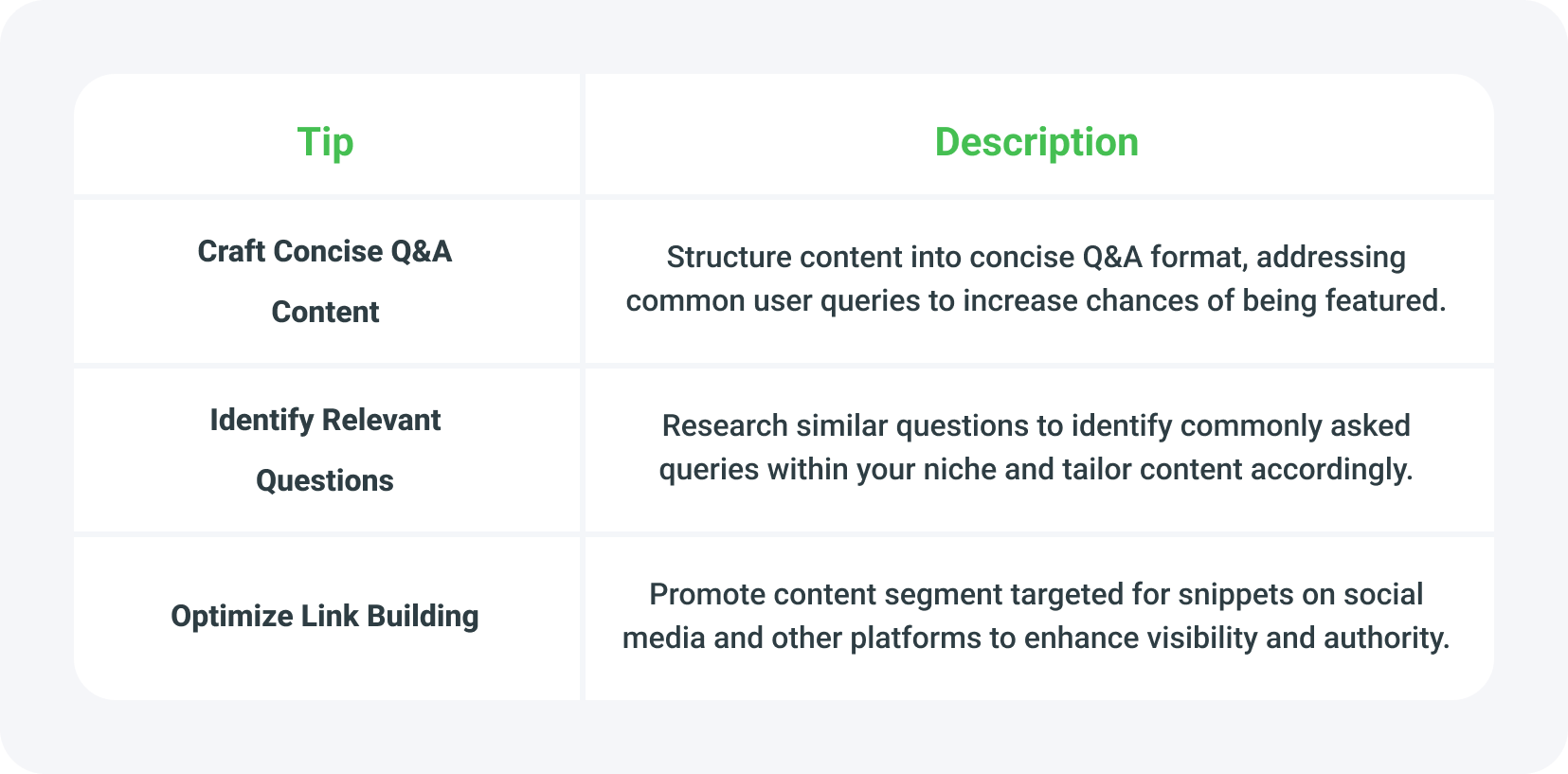
Featured snippets in search engines offer users quick, concise answers to their queries directly on the search results page. For affiliates, appearing in these snippets presents an invaluable opportunity to secure the top spot in search results and drive significant traffic to their sites. To achieve this coveted position, it's essential to strategically optimize your content.
Here are some actionable tips to increase your chances of securing featured snippets:
• Craft concise Q&A content - structure your content into concise paragraphs formatted as questions and answers, with each segment containing 40-50 words. Focus on addressing common user queries related to your niche.
• Identify relevant questions - research "similar questions" in search results to identify commonly asked queries within your niche. Tailor your content to provide clear and informative answers to these questions.
• Play along with search engines - recognize that search engines like Google select specific text excerpts to feature in snippets. To align with this, ensure your content contains relevant and well-structured information that is likely to be chosen for snippet inclusion.
• Optimize link building - actively promote the content segment targeted for snippets on social media, forums, and other platforms. Encourage sharing and linking to this content to enhance its visibility and authority, increasing the likelihood of being selected for featured snippets.
By strategically optimizing your content and actively engaging in link building efforts, you can improve your chances of securing featured snippets in search engine results, ultimately driving more traffic and visibility to your affiliate site.
Conclusion
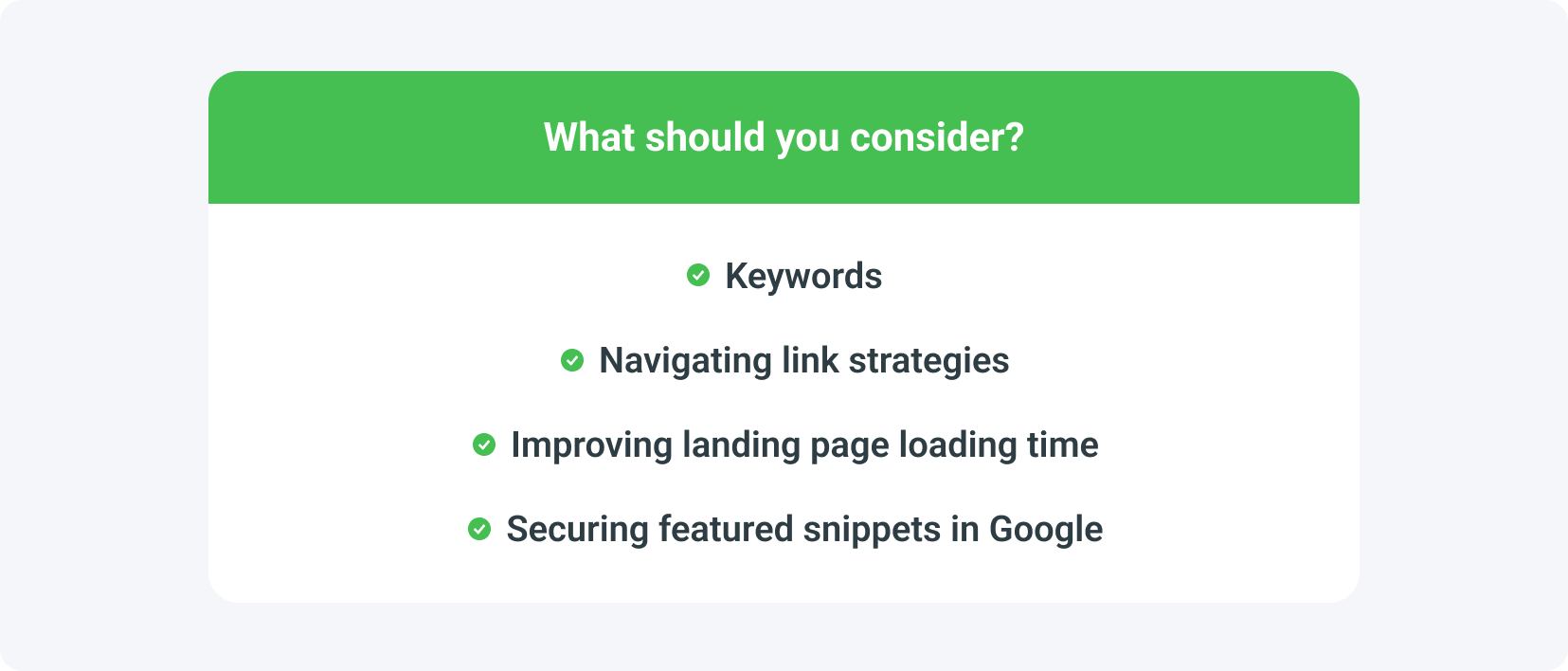
In conclusion, while the strategies outlined here provide valuable insights into SEO promotion for your landing page, it's important to recognize that success in this realm requires a comprehensive approach. SEO promotion is a long-term endeavor, particularly for those unable to make substantial investments. It demands continuous effort, adaptation to evolving algorithms, and a commitment to delivering high-quality content that resonates with your audience.
By implementing the tactics discussed, such as optimizing for featured snippets, improving loading times, and targeting high ROI keywords, you can lay a solid foundation for your SEO strategy. However, it's crucial to remain patient and persistent, as organic traffic growth often unfolds gradually over time.
Additionally, for a comprehensive guide covering all the essential aspects of SEO, be sure to check out our blog post dedicated to SEO tips and tricks. Our SEO checklist provides a thorough overview of the basics and serves as a valuable resource for enhancing your SEO efforts and maximizing your landing page's visibility.
Ultimately, by staying informed, consistently refining your approach, and prioritizing user experience and relevance, you can enhance your landing page's visibility and drive sustainable traffic from search engines. Success in SEO promotion requires dedication and perseverance, but the rewards in terms of increased visibility and engagement can be significant in the long run.
